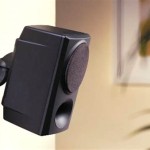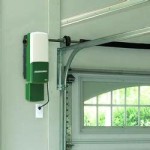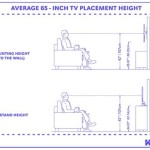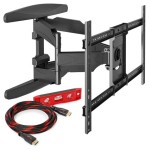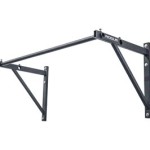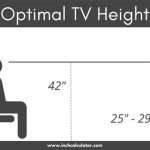Liquid Soap Dispenser Wall Mounted: A Comprehensive Guide
Wall-mounted liquid soap dispensers represent a practical and hygienic solution for hand hygiene in a variety of environments, from residential bathrooms and kitchens to commercial restrooms, healthcare facilities, and industrial settings. Their design aims to minimize countertop clutter, reduce waste, and promote effective handwashing practices. Understanding the different types, features, installation methods, and maintenance requirements is crucial for selecting the appropriate dispenser and ensuring its long-term functionality.
The market offers a diverse range of wall-mounted liquid soap dispensers, varying in materials, capacities, dispensing mechanisms, and aesthetic designs. The choice of a suitable dispenser depends on several factors, including the frequency of use, the type of soap to be dispensed, the overall aesthetic of the space, and budgetary constraints. This article provides a detailed overview of wall-mounted liquid soap dispensers, covering essential aspects to consider when selecting, installing, and maintaining these devices.
Types of Wall-Mounted Liquid Soap Dispensers
Wall-mounted liquid soap dispensers can be categorized based on several key distinguishing factors, the most prominent being the dispensing mechanism. The two primary types are manual and automatic (touch-free) dispensers. Material composition also plays a significant role, affecting durability, hygiene, and aesthetic appeal. The capacity of the dispenser is another essential factor, determining how frequently it needs to be refilled.
Manual Dispensers: These dispensers require manual operation, typically achieved by pressing a button or lever. The user physically actuates the pump mechanism, dispensing a pre-determined amount of soap. Manual dispensers are generally more affordable than automatic models and do not require batteries or electrical connections. They are a suitable option for low to medium traffic areas where cost-effectiveness is a primary concern.
The simplicity of their design contributes to their reliability, as there are fewer components that can malfunction. However, manual dispensers can be less hygienic than automatic versions, as users must physically touch the dispenser, potentially transferring germs. Some manual dispensers incorporate antimicrobial coatings on the contact surfaces to mitigate this risk.
Variations in manual dispensers include push-bar models and lever-operated models. Push-bar dispensers are often preferred in public restrooms due to their ease of use and robust design. Lever-operated models, on the other hand, may offer more precise control over the amount of soap dispensed.
Automatic (Touch-Free) Dispensers: Automatic dispensers utilize infrared (IR) sensors to detect the presence of hands. When a hand is placed within the sensor's range, the dispenser automatically releases a measured amount of soap. This touch-free operation minimizes the risk of cross-contamination, making automatic dispensers a preferred choice for healthcare facilities, food processing plants, and other environments where hygiene is paramount.
Automatic dispensers typically require batteries or a hardwired electrical connection for operation. Battery life can vary depending on the model and usage frequency. Some advanced models feature low-battery indicators to alert users when a battery replacement is needed. Hardwired models offer a more reliable power source but require professional installation.
The dispensing volume in automatic dispensers is often adjustable, allowing users to customize the amount of soap dispensed per activation. This feature can help reduce soap wastage and optimize cost efficiency. Some models also include a delay function, preventing accidental dispensing if a hand remains within the sensor range for an extended period.
Material Composition: Wall-mounted liquid soap dispensers are typically constructed from plastic, stainless steel, or a combination of both. Plastic dispensers are generally less expensive and lightweight. However, they may be less durable than stainless steel models and can be susceptible to damage from harsh chemicals or excessive force.
Stainless steel dispensers offer superior durability, corrosion resistance, and a sleek, modern aesthetic. They are a popular choice for high-traffic areas where durability and hygiene are critical. Stainless steel is also easy to clean and sanitize, making it an ideal material for environments with stringent hygiene requirements.
Some dispensers feature tempered glass or acrylic components for added aesthetic appeal. These materials are typically used for the soap reservoir, allowing users to easily monitor the soap level. However, glass and acrylic are more fragile than plastic or stainless steel and require careful handling during installation and maintenance.
Capacity: The capacity of a wall-mounted liquid soap dispenser refers to the amount of soap it can hold. Dispensers are available in a range of capacities, from small, residential-sized models to large, commercial-grade units. The appropriate capacity depends on the frequency of use and the number of users.
Smaller dispensers are suitable for bathrooms and kitchens in residential settings where usage is relatively low. Larger dispensers are recommended for high-traffic areas such as public restrooms, schools, and office buildings. Choosing a dispenser with adequate capacity minimizes the need for frequent refills, reducing maintenance time and associated costs.
Consider the size and accessibility of the refill opening when selecting a dispenser. A wide opening makes it easier to refill the dispenser without spilling soap. Some dispensers feature a removable reservoir, which simplifies the refilling process and allows for thorough cleaning.
Installation and Mounting Considerations
Proper installation is crucial for ensuring the stability and functionality of a wall-mounted liquid soap dispenser. The mounting surface, the dispenser's weight, and the type of wall anchors used are all important factors to consider. Following the manufacturer's instructions is essential for a successful installation.
Choosing the Right Location: The location of the dispenser should be easily accessible and convenient for users. In bathrooms and restrooms, the dispenser should be mounted near the sink, within easy reach for both adults and children. Consider the placement of other fixtures and accessories to avoid obstructions.
In kitchens, the dispenser should be mounted near the stovetop or food preparation area for easy access during cooking. Avoid mounting the dispenser directly above a heat source or in a location where it is likely to be exposed to excessive moisture.
Surface Preparation: Before installing the dispenser, ensure that the mounting surface is clean, dry, and structurally sound. Remove any dirt, debris, or loose paint. If mounting the dispenser on drywall, locate the wall studs and use appropriate wall anchors to provide secure support. If mounting on tile or other hard surfaces, use a drill bit specifically designed for that material to prevent cracking or damage.
Mounting Methods: Wall-mounted liquid soap dispensers typically come with mounting hardware, including screws, anchors, and a mounting plate. The mounting plate is attached to the wall first, and the dispenser is then secured to the mounting plate. Some dispensers utilize adhesive mounting strips, which offer a tool-free installation option. However, adhesive mounting strips are generally not recommended for heavy dispensers or for use on uneven or textured surfaces.
For added security, consider using tamper-resistant screws or a locking mechanism to prevent unauthorized removal of the dispenser. This is particularly important in public restrooms or other high-traffic areas where vandalism is a concern.
Accessibility Standards: Ensure that the installed dispenser complies with accessibility standards, such as the Americans with Disabilities Act (ADA). The ADA requires that dispensers be mounted at a height that is accessible to individuals with disabilities. The maximum height for operating controls is typically 48 inches above the finished floor.
Consider the reach range of individuals with disabilities when selecting the location for the dispenser. Ensure that the dispenser is within easy reach from a wheelchair or other mobility device.
Maintenance and Cleaning Procedures
Regular maintenance and cleaning are essential for maintaining the hygiene and performance of a wall-mounted liquid soap dispenser. Proper cleaning helps prevent the buildup of soap residue, bacteria, and mold. Regular maintenance can identify and address potential issues before they escalate into major problems.
Cleaning Frequency: The frequency of cleaning depends on the usage frequency and the environmental conditions. Dispensers in high-traffic areas should be cleaned more frequently than those in low-traffic areas. Dispensers in humid environments may require more frequent cleaning to prevent mold growth.
A general guideline is to clean dispensers at least once a week. However, in healthcare facilities or food processing plants, daily cleaning may be necessary to maintain strict hygiene standards.
Cleaning Solutions: Use a mild soap and water solution to clean the exterior of the dispenser. Avoid using harsh chemicals or abrasive cleaners, as they can damage the finish. For stainless steel dispensers, use a stainless steel cleaner to maintain the shine and prevent corrosion.
To clean the interior of the dispenser, empty the soap reservoir and rinse it thoroughly with warm water. Use a bottle brush to scrub the interior surfaces and remove any soap residue. Allow the reservoir to air dry completely before refilling it with soap.
Dispenser Mechanism Maintenance: Periodically check the dispensing mechanism for any signs of clogging or malfunction. For manual dispensers, ensure that the button or lever operates smoothly. For automatic dispensers, check the sensor sensitivity and battery life. Replace batteries as needed.
If the dispenser is clogged, try flushing the mechanism with warm water. If the clog persists, disassemble the dispenser and clean each component individually. Refer to the manufacturer's instructions for detailed disassembly and reassembly procedures.
Soap Type Considerations: Use only liquid soaps that are specifically formulated for use in dispensers. Avoid using thick, gel-based soaps, as they can clog the dispensing mechanism. Check the soap viscosity recommended by the dispenser manufacturer.
Ensure the compatibility of the soap with the dispenser material. Certain soaps can react with plastic components, causing discoloration or degradation. Using the recommended soap type ensures optimal performance and extends the lifespan of the dispenser.
Refilling Procedures: When refilling the dispenser, avoid overfilling the reservoir. Overfilling can cause soap to leak from the dispenser and create a mess. Wipe up any spills immediately to prevent staining or damage to the surrounding surfaces.
Use a funnel to help prevent spills during refilling. Some dispensers feature a level indicator on the reservoir, which indicates the maximum fill level. Do not exceed this level.
By adhering to these installation and maintenance guidelines, users can maximize the longevity and effectiveness of their wall-mounted liquid soap dispensers, contributing to improved hygiene and a cleaner environment.

Sg Bathroom Shampoo Dispenser Liquid Soap Holder Wall Mount Head Shower Container 450ml 1pcs Lazada Singapore

Stainless Steel Wall Mounted Bathroom Liquid Soap Dispenser Shower Gel Detergent Shampoo Bottle Hotel Home Accessories

Liquid Soap Dispenser Loo Toilet Hand Wash Wall Mounted Shower Gel Pump Bathroom

Norye Whole 304 Stainless Steel Wall Mounted Liquid Hand Soap Dispenser Made In China Com
Sg Bathroom Shampoo Dispenser Liquid Soap Holder Wall Mount Head Shower Container

Bathroom Foam Soap Dispenser Hand Sanitizer Holder Wall Mount Shampoo Shower Liquid Storage Bottles And Jars Lazada Singapore
Seck Automatic Soap Dispenser Wall Mount Hand Wash Foam Liquid Gel Type C Usb Charging Infrared Induction Sensor

750ml Compact Hand Wash Dispenser Convenient And Easy To Maintain Soap 35 Years Hotel Bathroom Shower Dispensers Manufacturer Homepluz
.jpg?strip=all)
Small Wall Mount Hand Soap Dispenser 250ml Single White Automatic Sanitizer Dispensers Manufacturer Homepluz

500ml Kitchen Lotion Shampoo Shower Liquid Soap Dispenser Foam Bottle Wall Mount

